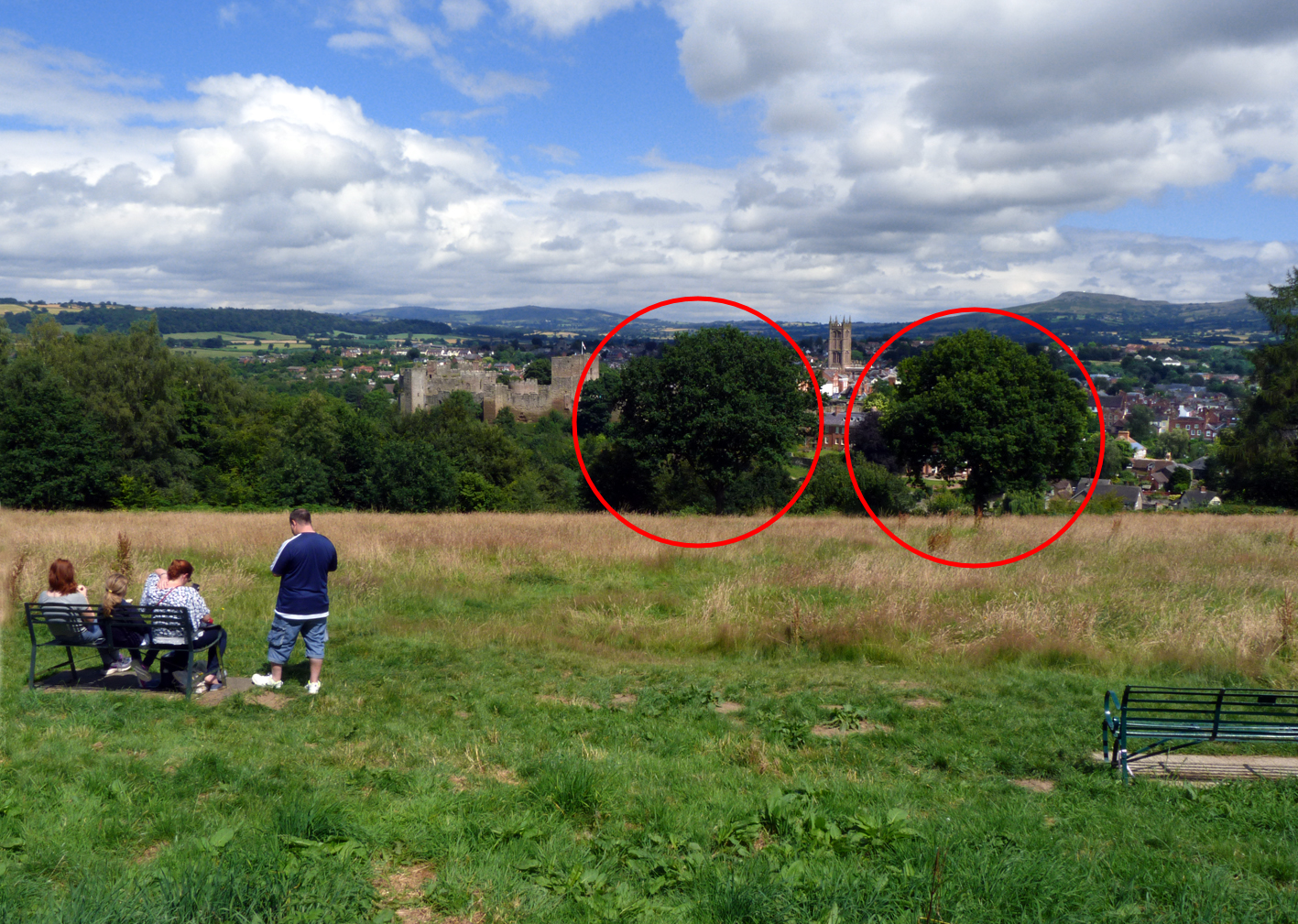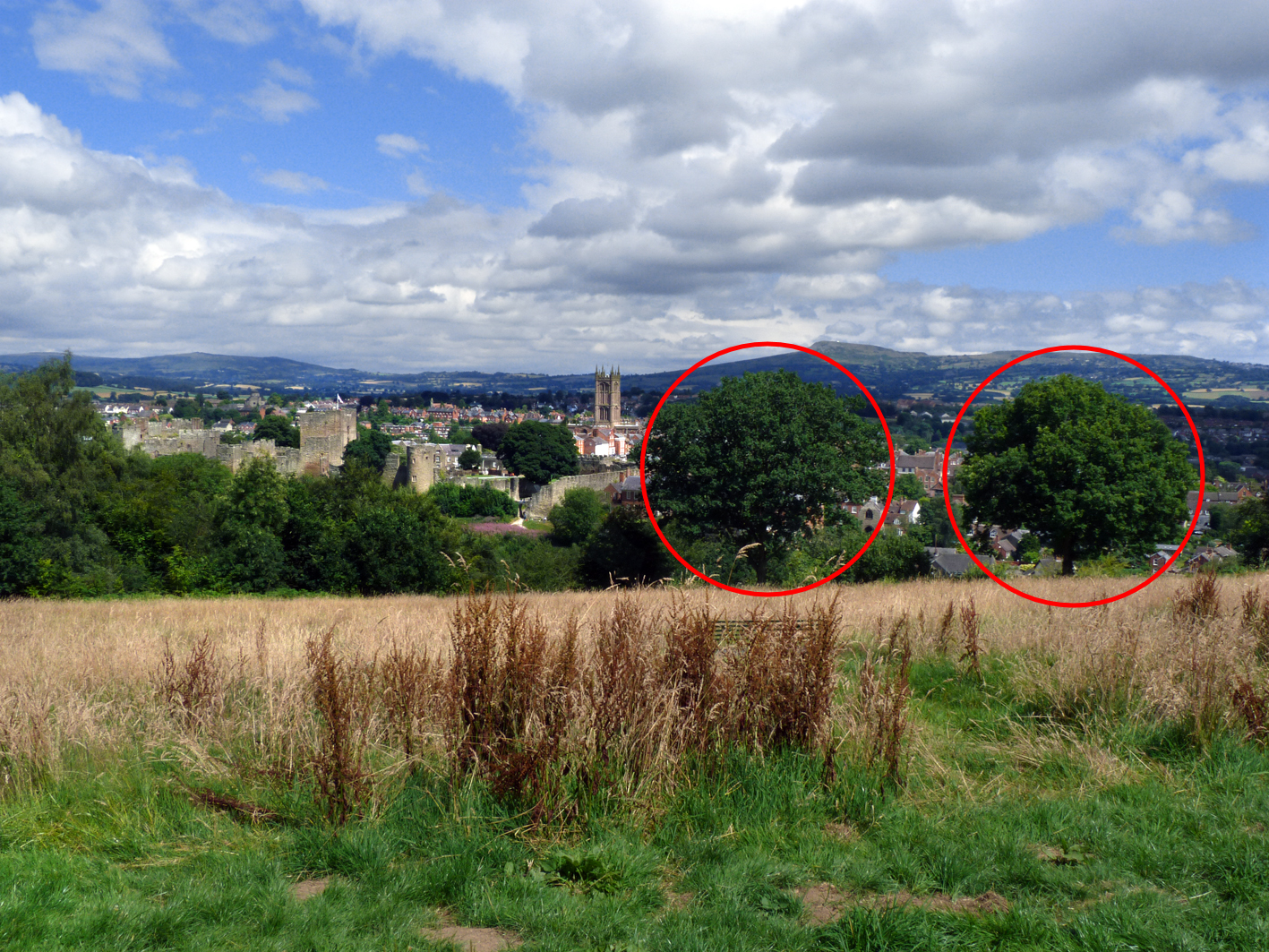Ludlow is no stranger to controversy. We are a busy town, medieval in origin with a streetscape to match. We are also a working and tourist town, and one that is proud of its green credentials. As a rule of thumb, a local councillor’s inbox is dominated by emails on new developments, parking and trees, followed closely by litter, dog poo and other antisocial behaviour.
This month it has been trees dominating my inbox. The proposal to fell two semi-mature oaks on Whitcliffe Common to ensure that locals and visitors can enjoy the view towards Ludlow has stirred a lot of people to make passionate arguments for and against (16/03003/TCA). I am not in favour.
That is now by the by, as Shropshire Council’s tree team have decided not to object to the felling of the oak trees (trees 8 & 9). That means they will be coming down sometime after the nesting season ends.

In his report, the council’s tree officer said:
Trees 8 & 9 are highly visible well-formed specimens that have potential to triple or quadruple their size and volume and to be features in the landscape for many generations. Following consideration of the form and potential future contribution of these trees the Council acknowledges that there is an arguable case for their long term retention based on amenity.
The officer decided that management of the two trees is not an attractive option:
Many of the objectors have argued that a compromise could be met through the crown management of the two oaks as they grow, but we consider that these young trees have potential to triple or quadruple their size and to manage them to form an artificial status quo through pruning would not necessarily be conducive to retaining fine natural looking specimens. Further to this the trees whilst magnificent are two amongst many and from the council’s perspective the larger area of woodland on the common is the primary sylvicultural resource and amenity.
But he feels that the need to preserve views of historic Ludlow predominates:
In the balance the Council has weighed the merits for and against the removal of these trees and considers the trees to be of high value as individuals and in almost any other circumstance would protect their individual amenity with a Tree Preservation Order. In this particular instance the amenity provided to local distinctiveness through the perpetuation and ease of access to an iconic view is also high. In the light of this and the stated intention of the Friends of Whitcliffe Common the Council’s Tree Service does not object to the Friends groups proposal to removal these trees because the range of reasons for removal supports a very rare situation where the loss of significant amenity trees is balanced by equivalent gains in another amenity.
I accept the officer’s conclusions, even if they go against my instincts.
This has been a lively exercise in public engagement. But with hindsight it might have been handled differently. Given the high number of public comments, it might have been useful to have arranged a public engagement exercise before the application to provide a clearer explanation of what the Friends were trying to achieve and what their policies are on managing trees that obscure views.
We are always learning. Looking at my inbox I am sure I will write again on trees very shortly.


The Officer is to be congratulated. What great bureaucratic verbiage.I couldn’t see the wood from the trees…….or was that the intention!
I was only saying to the missus the other day “shame the view of Ludlow is being blocked, a real blow for the people of Ludlow and visitors.”…
This is turning into a “Brexit” . Shropshire planning have made their decision after votes and comments from all sides. Why are we still debating this topic. .??
Let us all have our view back. The longer we wait the worse the problem will get.
We should never try to snuff out debate. And certainly not on this blog!